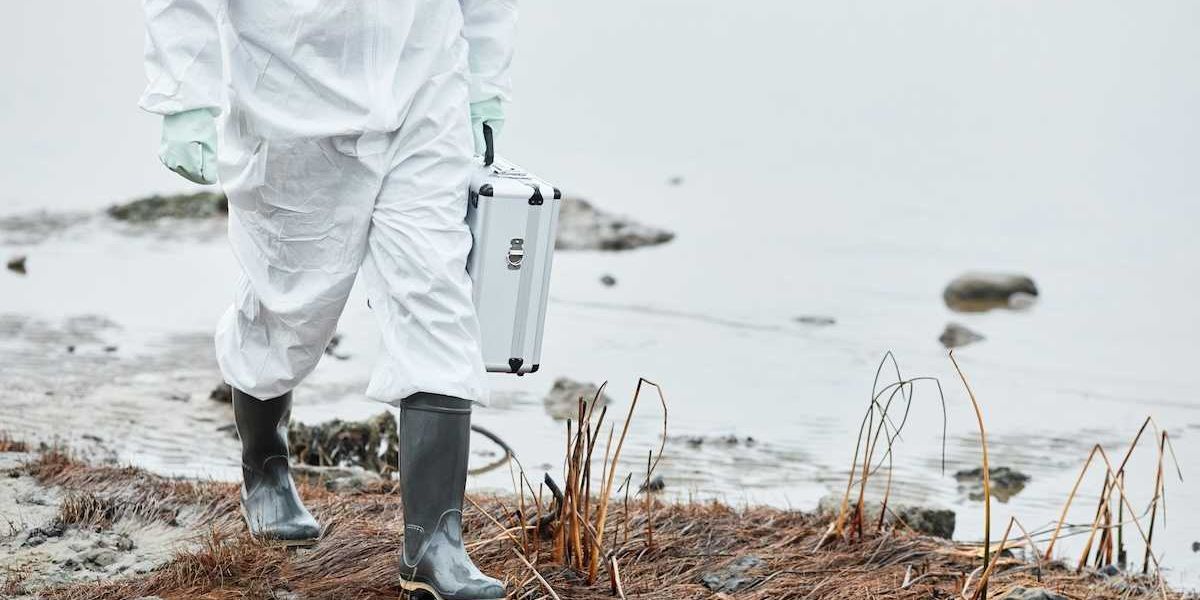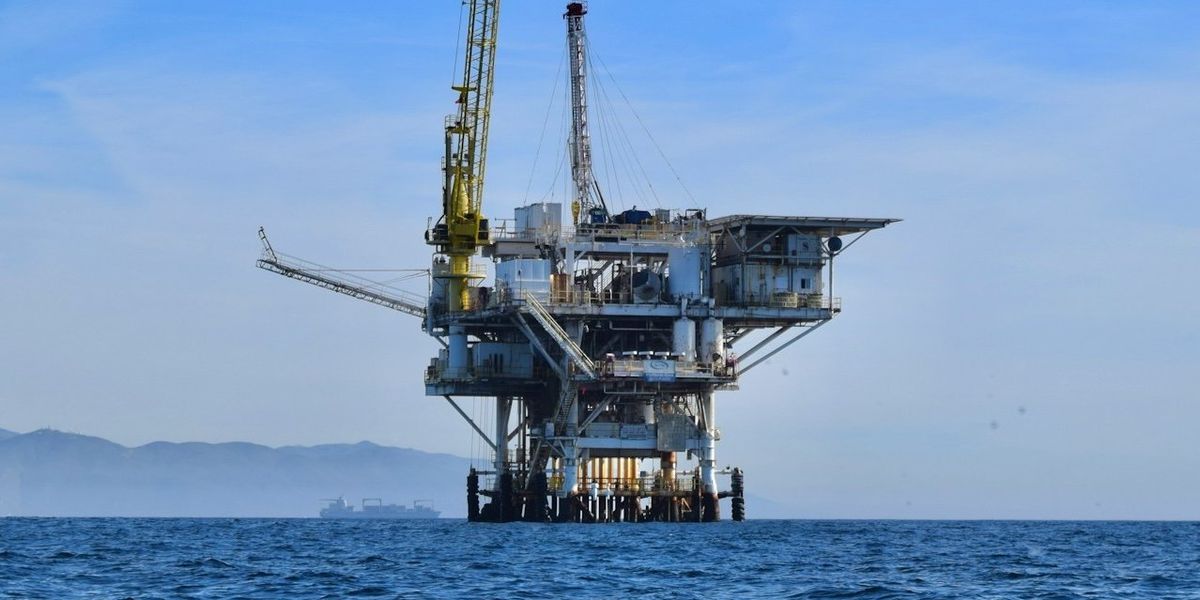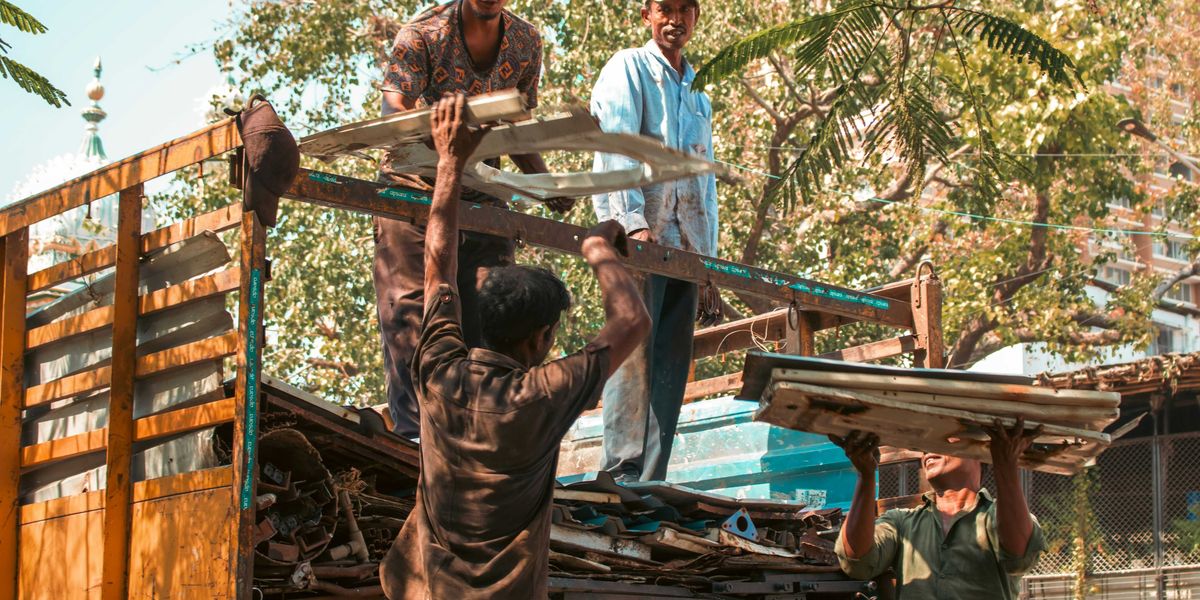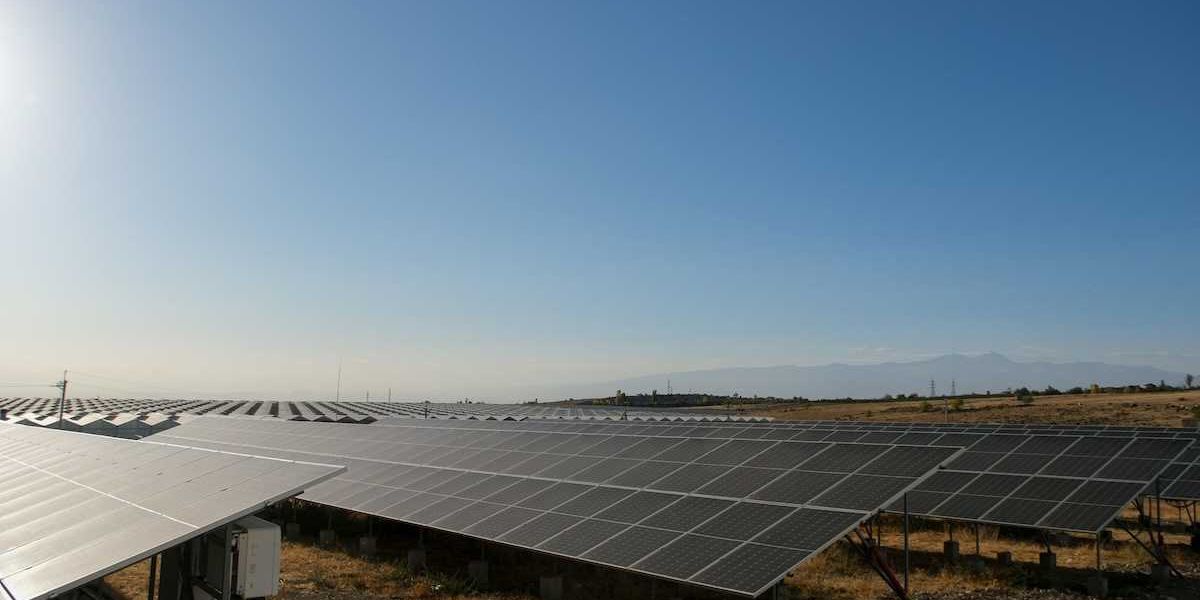From poisoning to skin diseases: multiple effects of sargassum on health
Sargassum health problems plague Caribbean French islands despite millions spent.
This is a republishing collaboration with Centro de Periodismo Investigativo, where this originally published. See the full series, Caribbean People at Risk from Sargassum Invasion.
In the quiet seaside village of Capesterre on Marie-Galante island in Guadeloupe on April 18, 2023, the air-quality monitoring institute Gwad’Air issued a “red alert” to warn people away from coastal areas.
The culprit was sargassum. After washing ashore for days, the floating seaweed was emitting a dangerous level of hydrogen sulfide gas as it rotted on the beach.
To read a version of this story in Spanish click here. Haz clic aquí para leer este reportaje en español.
The problem was not new for residents of Marie-Galante, a sleepy agricultural island of 11,000 inhabitants that is part of Guadeloupe’s biosphere reserve.
Since the first mass strandings more than ten years ago, rotting sargassum has frequently plagued residents and tourists and forced several businesses and restaurants to close their doors for months at a time.
Among the struggling proprietors are sisters Marie-Louise and Lyselène Bade, who recently shuttered their small hotel Le Soleil Levant.

Though they still operate a bakery and grocery store they inherited from their mother, Marie-Louise said a Gwad’Air technician recently asked her a worrying question: “How do you manage to stay here?”
She often wonders the same thing.
“You know, I love wearing costume jewelry, but now I can’t keep it on my skin for more than a quarter of an hour. They oxidize and make my skin itch. When you see what it does to electrical equipment and metal, you wonder what it does inside your body, to your lungs,” she said.
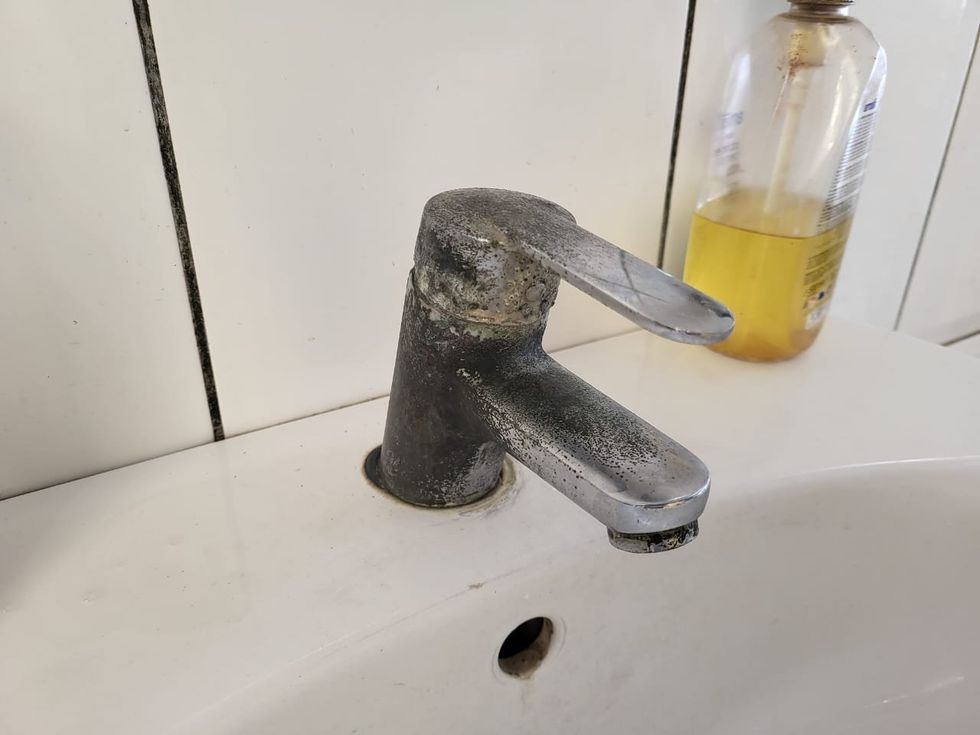
Thanks to recent research carried out in the French Caribbean — much of which has struggled with similar problems as Marie-Galante — scientists can now better answer that question.
They paint a bleak picture. Their studies suggest that the hydrogen sulfide and ammonia gasses released by rotting sargassum can endanger pregnant women, exacerbate respiratory issues like asthma, and cause headaches and memory loss, among other serious health problems.
But this knowledge has not been enough to protect Bade and many other Guadeloupe residents.
Even as the French Caribbean has emerged as a regional leader in the fight against sargassum, researchers such as Martinique-based doctor Dabor Resiere have said response efforts there have fallen far short.
As a result, many residents regularly face dangerous health risks — and the French government has turned to the world stage to call for an international response to address sargassum as a global problem.
‘Airborne poisoning outbreak’
By the time 2018 brought a record sargassum influx to Caribbean shorelines, the health effects of the rotting seaweed had become much better known. In December of that year, a group of sargassum researchers in Martinique issued a stark warning.
In a letter published in The Lancet medical journal, they noted that doctors in Martinique and Guadeloupe — French islands with a combined population of nearly 800,000 — had recently recorded more than 11,000 cases of acute sargassum toxicity during an eight-month period. Among them were three cases admitted to intensive care.
“To mitigate this emerging airborne poisoning outbreak, the French government has already promised €10 million [US $10,835,600] to supply equipment that can be used to remove the seaweed within 48 hours, to monitor hydrogen sulfide concentrations on the affected shores, to train doctors, and to assign experts in toxicology in affected areas,” wrote Resiere and 10 other researchers based in Martinique and France.
“Despite this commendable first effort by the French government, a mitigation plan to address this enigmatic sargassum invasion should urgently be discussed at an international level to boost marine research, pool resources, and consolidate local political priorities,” Resiere said.
The French government — which for decades has struggled with algae washing ashore on its European coasts — has launched two national sargassum plans funded with about $26 million for 2018-2022 and about $40 million for 2022-2026. Millions more were spent by local authorities in sargassum collection operations and investment in dedicated equipment.
“You know, I love wearing costume jewelry, but now I can’t keep it on my skin for more than a quarter of an hour. They oxidize and make my skin itch." - Marie-Louise Bade, owner of the small hotel Le Soleil Levant
As a result, the French islands of Guadeloupe, Martinique, Saint Martin and Saint Barthelemy have launched some of the most extensive response efforts in the Caribbean in recent years. Besides the ongoing research, these efforts have included air-quality-monitoring programs, clean-up initiatives, and one of the rare national response strategies that has been officially adopted by the government.
In 2019, Guadeloupe also hosted the first International Sargassum Conference, where the Guadeloupe Region — in partnership with the French government, the French National Research Agency and two Brazilian agencies — launched a call for projects with financial support from the European Union and other sources.
This effort ultimately funded 12 projects — the results of which were presented on Feb. 28, 2024 — as part of the National Sargassum Prevention and Control Plan. Besides probing the algae cycle and the environmental effects of sargassum, these projects have also investigated health impacts.
One of the outcomes, the SargaCare project, led to a July 2022 study on more than 3,000 pregnant women on Martinique, which reported finding evidence of a higher risk of potentially fatal preeclampsia in expectant mothers exposed to sargassum fumes.
A later SargaCare study suggested that prolonged exposure to the fumes increases the risk of patients developing sleep apnea.
‘The situation remained unchanged’
But despite this work, health researchers have warned that response efforts have not kept pace with the problem in the French Caribbean or the wider region.
More than four years after their 2018 warning in The Lancet, Dr. Resiere and seven colleagues upped the ante in a March 2023 letter published in the Journal of Global Health.
In Guadeloupe and Martinique, they wrote, “the situation remained unchanged. Despite the French government’s plans to tackle the sargassum problem, these toxic algae are continuing to inundate the coasts of Martinique, Guadeloupe, and French Guiana in ever-greater volumes.”
The Covid-19 pandemic, they stated, was partially to blame for the problem because it had sucked up health resources. But they also noted the absence of a coordinated regional health response and warned that Caribbean governments eager to jumpstart their post-pandemic tourism economies may be inclined to downplay the sargassum problem.
“The public continues to be adversely affected, some have sold their dream houses which are becoming unlivable, some have abandoned their schools and workplaces for lack of a solution to this scourge,” the researchers wrote. “It is urgent to come to the aid of these families who, in addition to the health consequences due to the significant emanations of hydrogen sulfide, have to bear the material consequences, being often forced to replace all their household appliances or the metal parts of their houses.”
2023 season
By the time the researchers’ letter was published in March 2023, a new sargassum season was already causing health problems across the French Caribbean.
In late January 2023, a 59-year-old woman was treated by emergency services for acute toxicity after taking part in a sargassum clean-up on Tartane beach in Trinité, Martinique.
On March 2, the Martinique municipality of Le Robert partially closed the Four à Chaux school due to high exposure to gas released by sargassum.
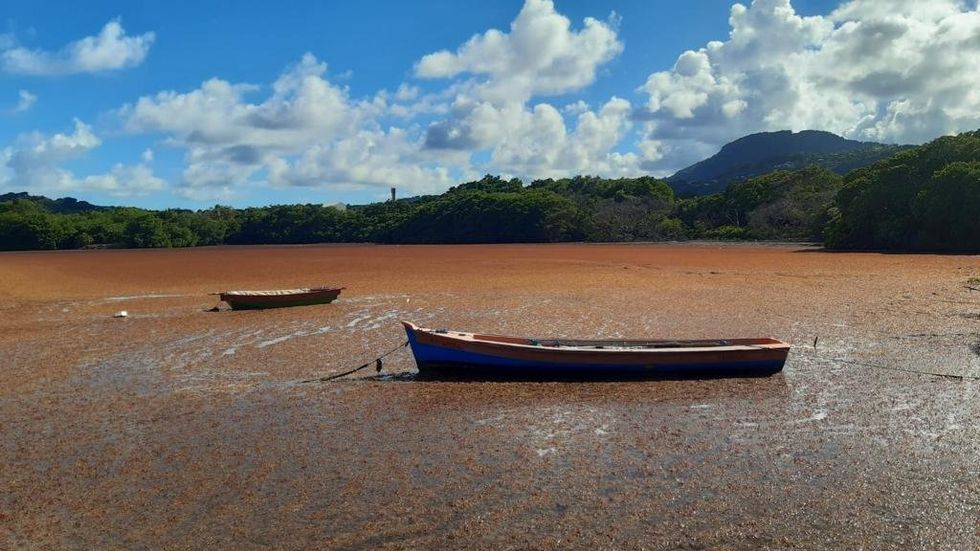
And when the air pollution alert was triggered in Guadeloupe’s Saint-François lagoon area on Sept. 15, people were asked to move away from a populated marina area that hosts hotels, restaurants and tourism businesses offering water activities.
Marie-Galante
Back in Marie-Galante, Marie-Louise Bade continued to struggle as well. Bade, who goes by “Malou,” operates multiple businesses on her island, where the economy is powered by tourism, fishing, sugarcane and banana crops, and a rum distillery.
“For 11 years, I’ve had to put up with this,” Bade said. “For 11 years, every time I open my doors, I think, ‘My God, what other appliance is going to break down this morning?’ No matter how much we repair, clean, the walls turn gray. Algae eats away at all the plumbing. … So everything is destroyed and there are leaks all the time.”
Tourists, she said, stopped coming.
“I can’t rent out the rooms anymore,” she said. “People open the windows, they have a view of the sargassum. There’s the smell. And on the walls, the pipes, the air-conditioning: Everything turns black.”

Her health has suffered as well.
Bade described continuous itching, small pimples appearing on her skin, vision issues, and respiratory problems that now force her to take asthma medication.
Various governmental efforts have not provided relief in her day-to-day life, she said. About two years ago, for example, the Guadeloupe regional health agency distributed questionnaires for about a month. But since then, she said, no follow-up action has been taken to her knowledge.
The businesswoman said the town doctor regularly monitors the effects of sargassum on the population’s health, and he encourages her to consult him every three months.
Last year, residents got a brief respite when booms were installed offshore in August in hopes of preventing the seaweed from reaching the beach.
For a while, the solution worked, according to the town’s mayor, Jean-Claude Maes. Residents started walking along the coast again as they hadn’t done for years, and a few entrepreneurs decided to set up new businesses, Maes said.
But the respite was short-lived: The booms were swept away last October by swells caused by Hurricane Tammy. Plans to reinstall them by December still have not come to fruition.
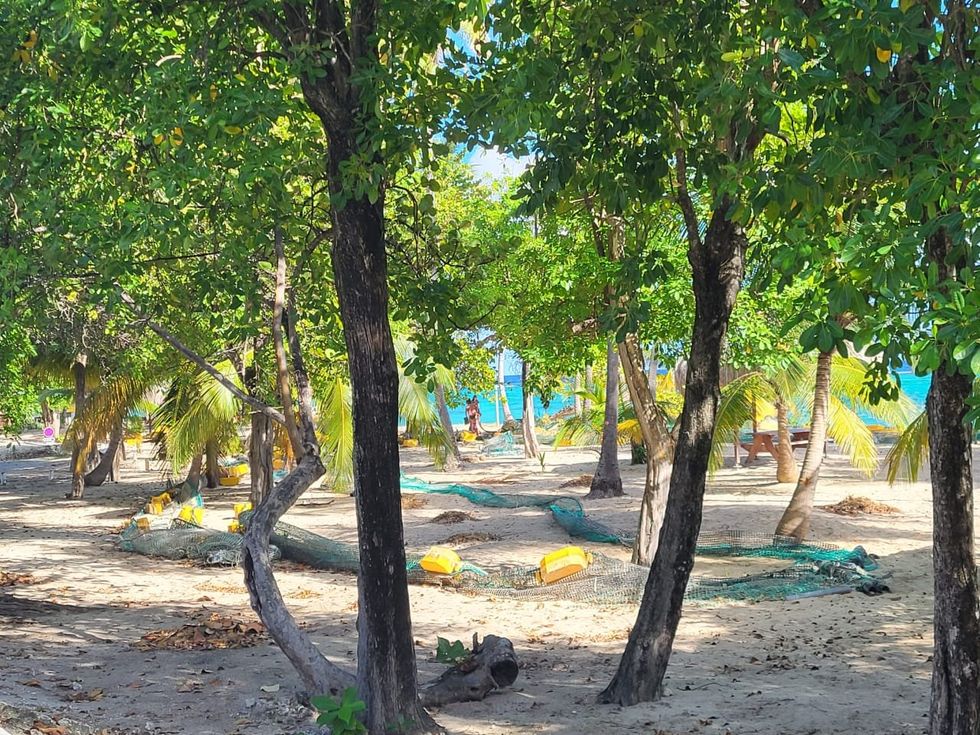
Though such responsibilities normally fall to towns and cities, the French government has decided to bear 80% of the financial cost of combating sargassum. But the mayor said that funding was slow in coming last year.
‘Irritation and anxiety’
While residents suffer, research continues. Professor Dabor Resiere, a sargassum researcher and department head at Martinique University Hospital, said previous studies have focused largely on the effects of acute toxicity caused by high levels of sargassum gasses.
But there is a dearth of information on chronic toxicity at lower doses, he said. To learn more, the professor and his team have been visiting patients in the field as part of a Martinique University Hospital monitoring program they plan to export soon to Guadeloupe, St. Lucia and other islands.
“We don’t know about the average resident who lives near a stranding site, who receives a small amount of [exposure to sargassum gas] every day,” said Resiere. “We can see that the majority of these patients continue to have trouble sleeping, continue to have generalized fatigue, continue to have conjunctivitis, irritation and anxiety. This anxiety, this depressive syndrome: All these symptoms we observe in patients. But now we need to demonstrate it scientifically.”
Other research is continuing as well. After the results of the 2019 call for projects were presented this February, the Guadeloupe Region and its partners launched a new call for projects. This round will continue studying health impacts, as well as addressing other topics including sargassum’s effects on marine ecosystems and the hydrodynamic conditions that affect blooms.
But in Marie-Galante, Bade and her sister have more immediate concerns.
Currently, the metal roof of their businesses leaks because of holes they blame on corrosion caused by the sargassum gasses. But they are reluctant to invest in repairs as long as they are faced with continued uncertainty.
Despite the risks, they have no plans to leave. For Bade, it is inconceivable to close the business bequeathed to her by her mother, in which she and her sister grew up.
“What would the town be without a bakery?” she asked.
This investigation is the result of a fellowship awarded by the Center for Investigative Journalism’s Training Institute and was made possible in part with the support of Open Society Foundations.



